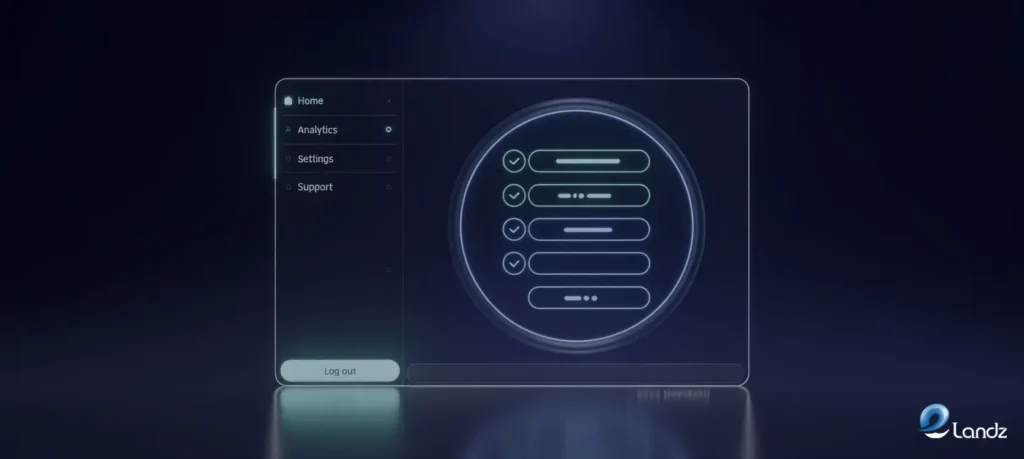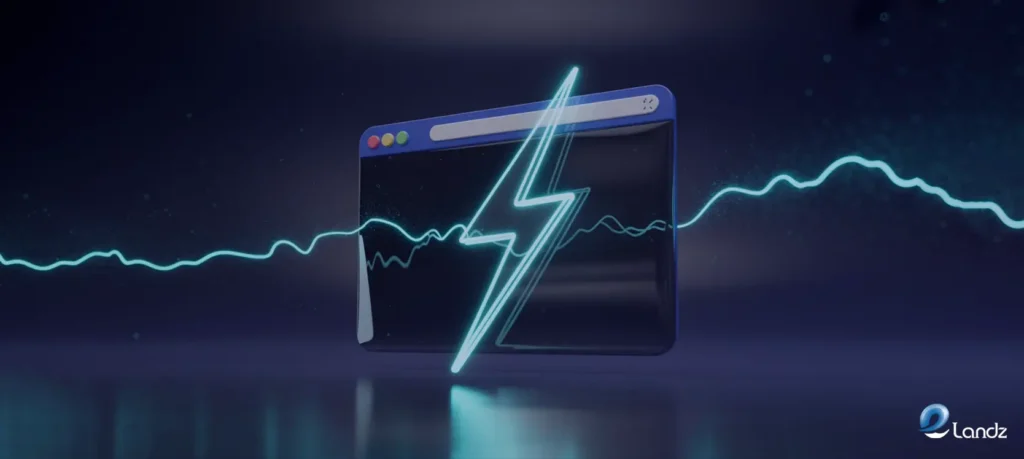
How to Optimize a Landing Page for Lead Generation
01 Aug 2025Introduction
Is your team wishing they knew how to optimize a landing page for lead generation? These pages serve as the gateway between your digital marketing efforts and potential customers. When visitors arrive at your landing page, you have mere seconds to capture their attention and guide them toward conversion.
The difference between a high-performing landing page and one that fails lies in strategic optimization that addresses every element of the user experience.
Modern consumers expect seamless, intuitive experiences that provide immediate value. Your landing page must deliver on this expectation while simultaneously collecting valuable lead information. The challenge lies in creating a perfect balance between persuasion and user experience, ensuring that every element works harmoniously to drive conversions and generate qualified leads for your business.
Understanding the Psychology Behind Effective Landing Pages

Learning how to optimize a landing page for lead generation begins with some fundamentals.
Consumer behavior on landing pages follows predictable patterns rooted in psychology and user experience principles. Visitors typically scan content in an F-pattern, focusing first on headlines, then subheadings, and finally diving into detailed content. Understanding this behavior allows you to strategically position your most compelling elements where they’ll have maximum impact.
Trust signals play a crucial role in visitor decision-making processes. When prospects encounter unfamiliar brands, they subconsciously look for credibility indicators such as professional design, social proof, and clear value propositions. Your landing page must immediately establish credibility while addressing potential concerns that might prevent conversion, creating a psychological foundation that encourages prospects to share their contact information.
Crafting Headlines That Capture Attention and Drive Action
Your headline serves as the first impression and primary hook for engaging visitors. Effective headlines combine emotional appeal with clear benefit statements, immediately communicating what visitors will gain by taking action. The most successful headlines speak directly to the visitor’s pain points while positioning your offer as the ideal solution.
Secondary headlines and subheadings should reinforce your primary message while providing additional context and benefits. These supporting elements guide visitors through your value proposition, building momentum toward conversion. Consider using power words that evoke urgency, exclusivity, or transformation to enhance the emotional impact of your messaging and increase engagement rates.
Designing Visual Hierarchies That Guide User Attention
The visual hierarchy on your landing page guides how visitors process and absorb information. Strategic use of colors, fonts, spacing, and imagery creates a natural flow that guides attention toward conversion elements. Your most important information should be prominently displayed above the fold, while supporting details can be positioned strategically throughout the page.
Color psychology influences visitor behavior and emotional responses. Choose color schemes that align with your brand while using contrasting colors to highlight call-to-action buttons and important elements. Consistent visual styling throughout your landing page creates a professional appearance that builds trust and reinforces your brand identity, ultimately supporting higher conversion rates.
Optimizing Form Design for Maximum Completion Rates

Form optimization directly impacts your ability to capture leads effectively. Research consistently shows that shorter forms generate higher completion rates, but the optimal length depends on your offer’s perceived value. High-value offers such as free consultations or premium content can justify longer forms, while basic newsletter signups should minimize friction.
Field placement and labeling significantly affect user experience and completion rates. Position your most important fields first, use clear labels that explain exactly what information you’re requesting, and implement smart defaults wherever possible. Consider using multi-step forms for complex information gathering, as this approach reduces perceived effort while maintaining high completion rates through progressive commitment.
Creating Compelling Call-to-Action Elements
Your call-to-action button represents the critical conversion moment where prospects become leads. Effective CTA buttons use action-oriented language that creates urgency and clearly communicates the next step. Instead of generic phrases like “Submit” or “Click Here,” use specific language that reinforces the value proposition, such as “Get My Free Analysis” or “Start My Trial Today.”
Button design elements, including size, color, and placement, dramatically affect click-through rates. Your CTA button should be large enough to notice immediately but not so oversized that it appears unprofessional. Use contrasting colors that stand out from your page design while maintaining visual harmony. Strategic placement both above and below the fold ensures maximum visibility regardless of how visitors interact with your content.
Implementing Social Proof to Build Trust and Credibility
Social proof leverages the psychological principle that people follow the actions of others when making decisions. Customer testimonials, case studies, and success stories provide powerful validation for your offers. Feature-specific, detailed testimonials that highlight measurable results rather than generic praise to maximize credibility and impact.
Industry recognition, certifications, and media mentions serve as authoritative trust signals. Display logos from reputable companies you’ve worked with, showcase awards or certifications you’ve earned, and highlight positive media coverage. These elements work subconsciously to position your brand as trustworthy and established, reducing friction in the lead generation process.
Optimizing Page Load Speed for Better User Experience

Page load speed directly correlates with conversion rates and user satisfaction. Research indicates that even one-second delays in loading time can reduce conversions by up to 7%. Fast-loading pages create positive first impressions and reduce bounce rates, giving you more opportunities to engage visitors and capture leads.
Technical optimization involves compressing images, minimizing code, leveraging browser caching, and using content delivery networks. Regularly test your page speed using tools like Google PageSpeed Insights and implement recommended improvements. Mobile optimization is particularly crucial, as mobile users have even less patience for slow-loading pages and represent an increasingly large portion of web traffic.
Mobile Optimization Strategies for Multi-Device Success
Mobile-first design ensures your landing page performs optimally across all devices. With mobile traffic continuing to grow, your landing page must provide seamless experiences on smartphones and tablets. Responsive design automatically adjusts layout elements to fit different screen sizes while maintaining functionality and visual appeal.
Touch-friendly interfaces require larger buttons, simplified navigation, and streamlined content presentation. Mobile users interact differently with content, often using thumbs for navigation and expecting immediate access to key information. Optimize your mobile forms by reducing field requirements, implementing auto-complete features, and ensuring easy input methods that work well with mobile keyboards.
A/B Testing Methodologies for Continuous Improvement
Systematic testing reveals which elements drive the highest conversion rates when you learn how to optimize a landing page for lead generation effectively. Develop testing hypotheses based on user behavior data, industry best practices, and conversion optimization principles. Test one element at a time to isolate variables and generate clear, actionable insights about what works best for your specific audience.
Statistical significance ensures your test results are reliable and actionable. Run tests long enough to gather sufficient data, typically requiring at least 100 conversions per variation for meaningful results. Document your findings and apply successful elements to future campaigns while continuing to test new optimization opportunities to maintain competitive advantages.
Leveraging Analytics to Identify Optimization Opportunities
Data-driven optimization relies on comprehensive analytics tracking to understand visitor behavior patterns. Implement conversion tracking, heat mapping, and user session recordings to gain insights into how visitors interact with your landing page. This information reveals friction points, popular content areas, and opportunities for improvement.
Conversion funnel analysis identifies where prospects drop off in your lead generation process. Examine each step from initial page load through form submission to pinpoint specific areas causing visitor abandonment. Use this data to prioritize optimization efforts and focus on changes that will have the greatest impact on overall conversion rates.
Advanced Personalization Technologies for Higher Conversions

Dynamic content personalization increases relevance and engagement by tailoring messages to specific visitor segments. Use demographic data, traffic sources, and behavioral indicators to customize headlines, offers, and imagery. Personalized experiences create stronger connections with prospects and significantly improve conversion rates compared to generic approaches.
Marketing automation platforms enable sophisticated personalization at scale. Implement tools that can deliver different content based on visitor characteristics, previous interactions, or referral sources. This technology enables you to create highly targeted experiences that feel personal and relevant, ultimately driving higher-quality leads and improved conversion performance.
Integration Strategies for Seamless Lead Management
Landing page integration with customer relationship management systems ensures captured leads enter your sales funnel immediately. Automated lead routing, scoring, and follow-up sequences maximize the value of every conversion. Proper integration eliminates manual data entry while ensuring no leads fall through the cracks.
Marketing automation workflows nurture leads based on their landing page interactions and submitted information. Create targeted email sequences, score leads based on engagement levels, and trigger appropriate follow-up actions. This systematic approach increases the likelihood of converting leads into customers while providing valuable data for ongoing optimization efforts.
Advanced Tactics for Maximum Lead Generation Impact
Advanced optimization tactics focus on psychological triggers and user experience refinements that incrementally improve performance. Implement scarcity elements, social proof indicators, and value-stacked offers that create compelling reasons for immediate action. These sophisticated approaches often produce significant improvements when applied systematically.
Continuous optimization requires ongoing attention to performance metrics, user feedback, and industry trends. Establish regular review cycles to assess landing page performance, implement new testing opportunities, and refine successful elements. The most effective landing pages evolve continuously based on data insights and changing user expectations, maintaining competitive advantages through persistent improvement efforts.
Conclusion
Successful landing page optimization combines strategic planning, user-centered design, and data-driven refinement to create powerful lead generation tools. Understanding how to optimize a landing page for lead generation requires mastering multiple disciplines, from psychology and design to analytics and technical implementation. The strategies outlined in this guide provide a comprehensive framework for transforming underperforming pages into conversion-focused assets that consistently deliver qualified leads.
The investment in landing page optimization pays dividends through increased conversion rates, higher quality leads, and improved return on marketing investments. By implementing these proven strategies systematically, you’ll create landing pages that not only capture visitor attention but convert that attention into valuable business opportunities that drive sustainable growth and long-term success.
FAQs
Check out this FAQ section!
What is the ideal length for a landing page?
Landing page length should align with the complexity of your offer and your audience’s needs. While short pages are effective for simple actions like newsletter signups, longer, more detailed pages are often necessary for high-value offers like consultations or demos to address potential objections and build trust.
How many form fields should I include on my landing page?
The optimal number of form fields balances information gathering with user experience. For most B2B offers, 3-5 fields work well, including name, email, company, and phone number. Higher-value offers can justify additional fields, while lower-commitment offers should minimize required information.
How do you optimize a landing page for lead generation on a limited budget?
Knowing how to optimize a landing page for lead generation begins with some essentials.
Focus on high-impact, low-cost improvements like headline optimization, form simplification, and clear call-to-action buttons. Use free tools like Google Analytics for data insights, implement basic A/B testing through platform features, and prioritize mobile optimization to maximize results without significant investment.
How often should I test and update my landing pages?
Implement ongoing testing cycles with new tests launching every 2-4 weeks, depending on your traffic volume. Major updates should be tested quarterly, while minor optimizations can be implemented more frequently. Continuous testing ensures your pages evolve with changing user expectations and market conditions.
What metrics should I track to measure landing page success?
Focus on conversion rate as your primary metric, supported by bounce rate, time on page, form abandonment rate, and cost per lead. Track these metrics consistently to identify trends and optimization opportunities. Advanced metrics like lead quality scores and customer lifetime value provide additional insights for long-term optimization strategies.


